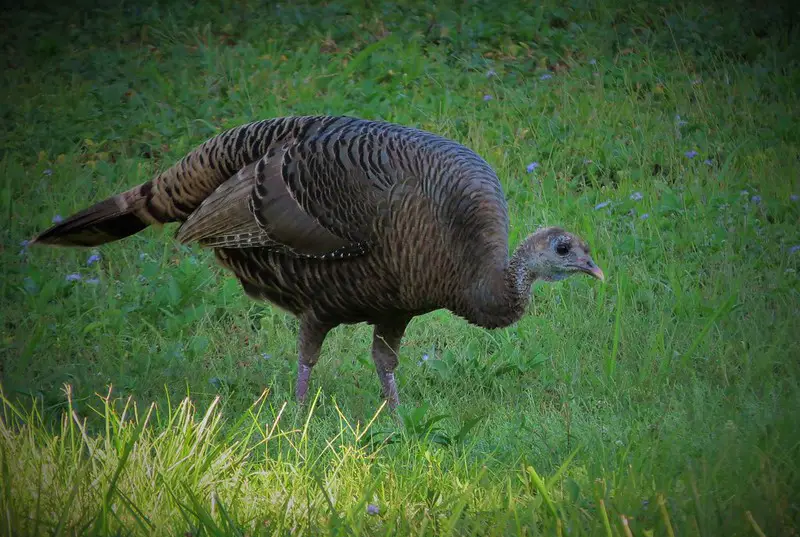
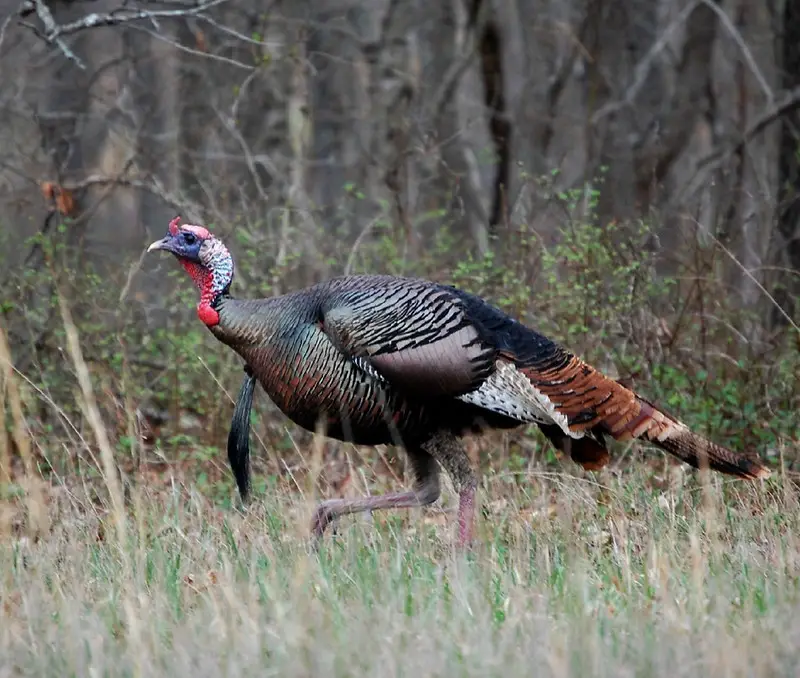
Always know your target before you pull the trigger. This is one of the golden rules of hunting. It’s not enough to just know that you’re shooting at a turkey. Just as in duck hunting you must know the species (and sometimes the sex). In deer hunting, you must be able to tell a buck from a doe. Well in turkey hunting, you must know the difference between a turkey hen vs a tom turkey.
A hen is a female turkey. They lay eggs and commonly make sounds known as clucks, yelps, cuts, kee-kees, and purrs.
A male turkey is known as a tom. Toms will make sounds known as gobbling, spitting, drumming, and yelping.
A juvenile tom is called a jake. For more information on jakes including whether you should shoot them or not, read our full article on the subject.
In most states, the law requires a harvest of only tom turkeys during the spring season. Some states allow you to shoot bearded hens. During fall seasons, there are states that allow both sexes to be harvested while others still only allow toms to be harvested.
As you can see, it is very important to be able to tell a tom from a hen. So let’s get into the differences.
Beard
Toms generally have a beard protruding from their chest. In a mature tom, these beards are usually seven inches or longer in length. Jakes will have shorter beards. Some toms have multiple beards.
Beards are black and are made of feather-like bristles.
The beard is usually easy to pick up when hunting so it is a key identifier. However, you can’t totally rely on the beard when identifying a turkey hen vs. a tom.
You see, some hens have beards. According to Julie Craven at BirdWatching, 5-10 percent of all hen turkeys have beards. And if that’s not confusing enough, some toms suffer from “beard rot” leaving them with a thin beard or even no beard at all. Beard rot results from vitamin deficiency in a turkey.
So a beard is a good guideline, but not a hard rule. What else can we use to tell a hen from a tom?
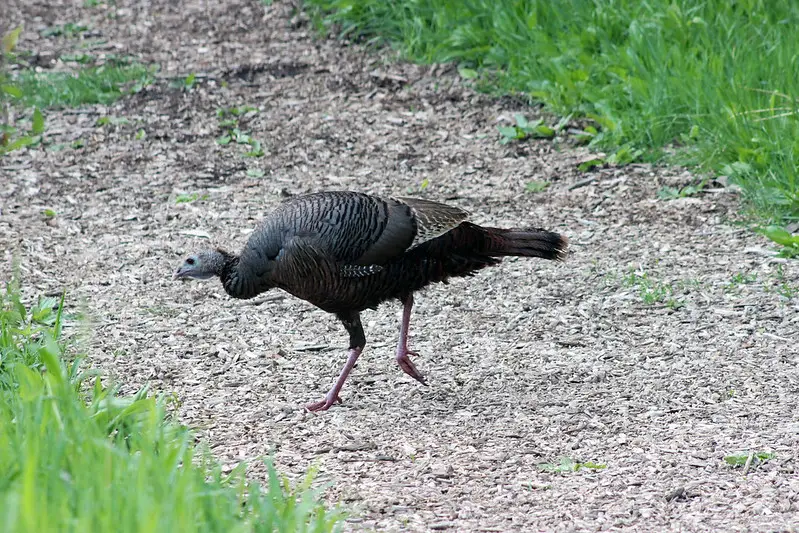
Spurs
For the most part, only toms and jakes grow spurs or “hooks”. In fact, spurs provide a rough estimate of the age of the tom. The theory is that the longer the spur, the older the turkey. The jake has a short, rounded spur while a three-year-old bird can have spurs longer than one inch in length.
A spur is a claw-like feather on the backside of the leg. They can be very sharp. Toms use the spurs to fight other gobblers and establish dominance. Spurs can vary in color from black to pink.
Unfortunately, spurs wear down, break, and even fall off. It can also be difficult to see the spurs of a tom in the field. So let’s move on to another factor we can use to differentiate a hen from a tom.
Size
Toms are bigger than hens. They typically run 11 to 24 pounds. A hen weighs from 5 to 12 pounds. The heaviest tom on record is 37.6 pounds.
Toms are also usually a bit longer than hens. The largest toms can be over four feet in length while the longest hens are usually just over three feet in length.
Size differences can be useful for determining sex if you have a mature tom and a hen. If you are seeing them separately in the field, it can be tough to determine gender based on size. Keep in mind that jakes and larger hens can be similar in size as well.
Size is another tool in our toolbox, but what other clues can we use?

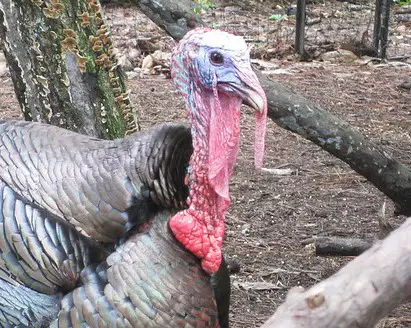
Head
The head is a great way to differentiate a tom from a hen as you will likely be focused on the head.
A tom’s head will be a combination of red, white, and blue. It is generally featherless. Toms also have a longer snood than a hen. The snood is the fleshy protuberance above the bill. It can contract, expand, and change colors based on the turkey’s mood.
The hen’s head is much less flashy than the tom’s. It is a blue-ish gray color. As mentioned above, the snood will be much shorter than a tom’s. Hen’s have small feathers on their heads.
The head is not the only coloring difference between a hen vs a tom turkey. Let’s look at the rest of their feathers.
Plumage
As you might have guessed, tom turkeys have flashier feathering than the hen like most other avian species.
The hen’s overall feathering is a browner tint than the darker, blacker tom’s. The tips of the feathers on a hen are more of a buff color. The tom turkey has dark, black color tips.
Let’s talk about how to identify the gender of a bird when tracking turkeys.

Photo courtesy of Virginia State Parks on Flickr
Tracks
As you might assume, the bigger tom has a bigger track than the smaller hen. If you find a track that is longer than four inches, it is probably a tom. Hen turkey tracks will usually be about three and a half inches in length.
Finally, there is another sign a turkey leaves behind.
Droppings
Yep, you can tell the sex of a turkey by its excrement. Toms leave a long, sometimes j-shaped dropping. These droppings are generally about two inches in length.
Tom droppings are easily distinguished from the more clumped together hen excrement.
Turkey Hen vs Tom: Final Thoughts
Determining the sex of a turkey is not easy when you are first getting started. As you become more experienced, you will learn to recognize toms and hens faster.
A good rule of thumb is to only shoot a bird after you have identified two distinguishing traits. For instance, if you see red on the head and a beard on the breast, you can feel confident that you are shooting a legal tom.
The exception to this rule would be if you are hunting in a state that allows you to shoot any bearded turkey, and you are fine taking a hen.
Hopefully, this article has made you feel a bit more comfortable in recognizing your game this hunting season. Bookmark this page and look at the pictures periodically to refresh yourself on the signs of a turkey hen vs a tom.
If you enjoyed this article, you may also like to read about the sounds a hen turkey makes.


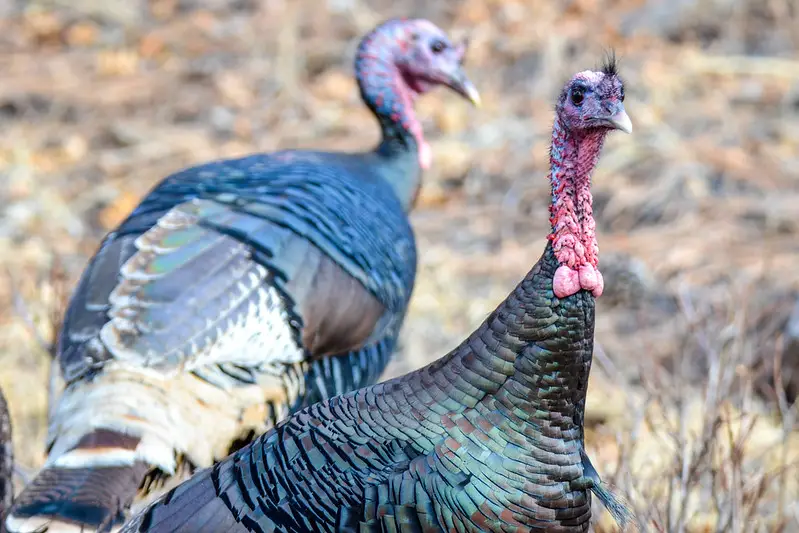
Pingback: Seven Essential Hen Turkey Sounds and What They Mean - Strutting Tom.com